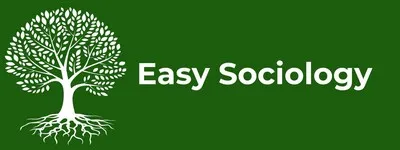Table of Contents
- Linear Growth and Population Dynamics
- Economic Development and Linear Growth
- Institutional Growth and Linear Expansion
- The Limitations of Linear Growth in Sociology
- Beyond Linear Growth: Toward a More Complex Understanding of Social Change
- Conclusion
Linear growth is a concept that can be applied across various disciplines, from economics to biology, but in sociology, it carries significant implications for understanding social change, development, and progress. Linear growth refers to the idea that certain processes or phenomena increase in a steady, consistent manner over time. This notion is often contrasted with non-linear growth, where change is erratic, exponential, or cyclical. Sociologists explore linear growth to understand how societies develop, how populations grow, how cultures evolve, and how institutions expand their influence.
This article explores the sociological dimensions of linear growth, analyzing its applicability in understanding human population dynamics, economic development, and the evolution of social institutions. By delving into these different areas, we can better appreciate the strengths and limitations of linear growth as a conceptual tool within sociology.
Linear Growth and Population Dynamics
One of the clearest applications of linear growth in sociology is in the study of population dynamics. At its most basic level, population growth is a process where the number of individuals in a given group increases over time. In some historical periods, population growth has followed a relatively linear trajectory. This is especially true in regions where birth rates and death rates have remained relatively stable over time, and where migration has not played a significant disruptive role. For instance, pre-industrial societies often experienced slow, linear population growth, as agricultural production and healthcare improvements were modest.
However, this pattern of linear growth has been repeatedly interrupted by external shocks, such as wars, plagues, and famines, which reduce population sizes and disrupt otherwise steady growth patterns. In contrast, the Industrial Revolution marked a shift away from linear population growth, as societies experienced rapid increases in population due to improved agricultural techniques, medical advancements, and urbanization. While the initial stages of population growth in the post-industrial period followed a linear model, the demographic transition theory explains how societies eventually move toward a stabilization of population growth after experiencing an initial boom.
In modern times, the application of linear growth models to population dynamics can be problematic. The assumption that population size will grow steadily ignores the complex factors that influence birth rates, death rates, and migration patterns. For example, in many developed nations, fertility rates have dropped significantly, challenging the idea of constant linear growth. Instead, sociologists now recognize that population growth is influenced by a range of factors, including economic conditions, cultural shifts, and government policies. These factors create a more nuanced understanding of population change that often deviates from the simplicity of linear growth models.
Economic Development and Linear Growth
Economic development has often been conceptualized as a linear process, particularly in classical economic theories. In these models, societies are thought to progress from a traditional, agrarian-based economy to a modern, industrial one in a step-by-step fashion. Early sociologists like Auguste Comte and Herbert Spencer were proponents of this type of thinking, positing that societies develop in a linear fashion from primitive to advanced stages. In this framework, economic growth is seen as an inevitable consequence of technological advancement, increasing specialization, and the expansion of markets.
However, the assumption that economic growth follows a linear trajectory has been widely critiqued. Theories of modernization, for instance, often assume that developing nations will follow the same path as developed nations, progressing steadily from underdevelopment to industrialization. In reality, economic growth is much more variable, and many nations experience periods of stagnation, regression, or uneven development. Moreover, linear growth models tend to overlook the impact of global inequality, historical exploitation, and external shocks, which can significantly disrupt a country’s economic development.
The critique of linear economic growth models is supported by world-systems theory, which suggests that global economic development is shaped by a hierarchical system of core, semi-peripheral, and peripheral nations. In this framework, growth is not linear but uneven, as wealthier core nations extract resources and labor from peripheral nations, reinforcing global inequalities. Thus, while economic growth in core nations may appear to follow a linear path, it is sustained by the exploitation of peripheral nations, whose development is often hindered by external factors. This critique highlights the limitations of applying linear growth models to global economic development, as they fail to account for the complexities of power dynamics and inequality in the world economy.
Institutional Growth and Linear Expansion
Social institutions, such as education, religion, and government, are another area where linear growth has been used to explain development. Institutional growth refers to the way in which these structures expand their influence over time, often becoming more complex, specialized, and bureaucratic. Max Weber, one of the founding figures of sociology, famously described the rationalization of society as a linear process in which institutions become more efficient, predictable, and controlled. In this view, linear growth is associated with progress and the increasing capacity of institutions to manage complex social systems.
Weber’s concept of rationalization is particularly relevant when considering the growth of bureaucratic institutions. As societies modernize, the expansion of bureaucracy is often seen as a linear process. Governments, for instance, grow larger as they take on more responsibilities, such as providing healthcare, education, and welfare services. Similarly, educational institutions expand their reach, as the demand for higher education increases in industrialized societies. This linear growth is often framed as a sign of societal advancement, where the increasing complexity of institutions reflects the increasing sophistication of society itself.
However, linear growth models of institutional development are not without their limitations. For one, they often fail to account for the internal contradictions and inefficiencies that can emerge as institutions grow. Bureaucratic institutions, for example, can become overly complex and rigid, leading to inefficiency and stagnation. Moreover, the assumption that institutional growth is always positive overlooks the fact that the expansion of institutional power can lead to greater social control, inequality, and exclusion. For instance, as the criminal justice system expands, it may disproportionately target marginalized communities, leading to increased rates of incarceration and social inequality. Thus, while linear growth models can help us understand certain aspects of institutional development, they often fail to capture the more complex dynamics of power, resistance, and change within institutions.








